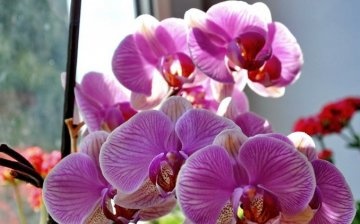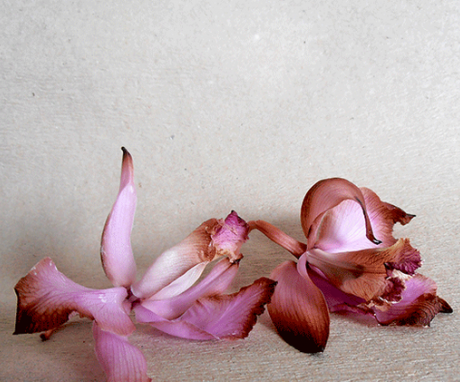Orchid drops flowers: why and what to do?
Tropical beauty orchid wins the hearts of even those who are almost indifferent to indoor flowers. This plant not only adorns ordinary window sills in rooms, but is also often used in designer interiors due to a wide range of shades of delicate petals.
However, a capricious flower requires proper care, and novice flower growers often have a question: why does an orchid shed flowers, and how to save them? It is necessary to figure out which variety of orchids is easier for beginners to grow, and how to properly care for them.
Content:
- Common varieties of indoor orchids
- Why does an orchid shed flowers
- How to properly care for orchids?
- Orchid diseases
Common varieties of indoor orchids
Most often, hybrid varieties are grown in room conditions: they are more adapted to life in an apartment, and it is easier for them to provide a suitable environment for a long life and flowering. Some varieties are able to bloom all year round: flower stalks replace each other, and the plant, with proper care, constantly pleases the owner with beautiful buds.
You can list some of the most common members of the Orchid family:
- Phalaenopsis - the familiar orchid with elongated dark green leaves and curved peduncles. Phalaenopsis, with enough sunlight and a comfortable room temperature, can bloom all year round, it is one of the most convenient for growing hybrids.
- Oncidium is a light-loving variety with large buds, the shape of which resembles butterflies. Hybrid orchid varieties are usually grown in rooms as they require less sunlight.
- Miltonia is an amazingly beautiful orchid species that is often grown in greenhouses. Miltonia have a curved stem and large flowers, the diameter of which reaches 8 cm. Externally, the buds resemble pansies due to their unusual color. This is a rather capricious flower, it is more often grown by orchid breeders.
- Cymbidium. In nature, these are large orchids with large buds and narrow bright leaves. Miniature hybrid varieties are more often grown in rooms. Their advantages are unpretentiousness and long flowering, each flower can live up to 12 weeks.
These are just some of the varieties that can be found both in greenhouses and conservatories, and in ordinary apartments. Novice growers need to figure out the optimal watering and illumination regime. To provide the orchid with good flowering conditions.
Why does an orchid shed flowers
Indoor orchids usually live between 7 and 15 years, and natural aging is one of the common reasons why they stop flowering even under good conditions. Normally, the orchid blooms for about 4 months, after which there is a break in flowering for 2-3 months, and then a new peduncle appears. Blooming problems in young orchids can occur for a variety of reasons:
- Hypothermia. If the flower was bought in a store in winter, it may drop flowers after transportation, if you do not take care of the correct multilayer packaging. Cold air in the room, drafts from the window - all this leads to the fact that the plant loses open and unblown buds.
- Overheating and too dry air. The orchid will have to be protected from direct sunlight, and in winter it should not stand on the windowsill, under which there is a hot battery. In extreme cases, the plant must be regularly sprayed, and a container with water must always be near it.
- Lack of light. All orchids are light-loving plants, and orchid flowers fall off often in autumn and winter, when daylight hours are reduced. To avoid this, it is necessary to provide the flower with additional illumination, the duration of daylight hours should be at least 12 hours.
- Wrong watering - one of the most common reasons that beginner growers often flood the plant, which is why its roots begin to rot. If some of the roots have been lost, the orchid will stop blooming and it will take several months for it to heal. root system.
- Another cause of flowering problems is stress. Orchid - a real princess of the flower world: she does not like the neighborhood with nuts and bananas, bouquets of fading flowers should not be left near the pot. In addition, she does not like permutations from room to room, so you need to choose one permanent place for her with enough light and no drafts. Violation of these conditions creates a stressful situation for the plant, which leads to the loss of buds.
How to properly care for orchids?
Is it possible to provide such a capricious flower with suitable conditions for flowering in an apartment? Yes, and it's not as difficult as it might seem at first glance. Hybrid varieties are much less demanding on growing conditions than their ancestors, and they may well find a suitable place.
Any orchid loves light, and they love to be on the eastern windowsills.
Direct sunlight is undesirable, as it can cause burns to the leaves. Orchids should not be placed under air conditioners and open vents; these plants are sensitive to drafts. It is best to find a spacious window sill for her, where other plants will not block the sunlight, the lush bloom will make her a real decoration of the room.
It is equally important to ensure that the orchid has the correct watering... Its frequency depends on the characteristics of the soil. However, there is one important requirement: the orchid is watered only after the earthen coma is completely dry. There are several ways to determine when it is time to water:
- Pay attention to the weight of the pot. Experienced growers can easily distinguish by weight whether the soil is completely dry, or is it still wet.
- When growing phalaenopsis in a transparent pot, pay attention to the color of the roots. If they have a bright green hue, then it is too early to water the plant. And if they become light - it's time.
- Dip a wooden skewer into the soil in the pot and leave it in the ground for half an hour: if it becomes wet, the soil does not need to be watered yet.
- If an orchid grows in a transparent plastic pot, look at its walls: when the soil is completely dry, condensation stops accumulating on them, and the earth itself becomes light. This indicates that it is time to water.
- In no case do not water the orchid with cold tap water: this creates a stressful situation for the plant, and it can begin to shed flowers, the optimal solution for watering is settled or filtered water at room temperature, and it must be defended for at least a day.
In addition to properly watering orchids, you need to take care of the care of the roots and leaves. If the plant produces new aerial roots, and they penetrate outside the pot, they do not need to be covered with soil. Old roots can only be cut off after they have turned brown, they are cut back to the young green part. If the leaves become flabby, this indicates a disease of the root system, and the plant needs to be transplanted. Leaves should be wiped regularly and protected from dust.
Orchid diseases
The most common disease among Orchids is various types of rot:
- Gray rot often affects young leaves, the disease manifests itself in large brown spots. It occurs due to low air temperature and excessive watering: the plant must always be in a warm room, and it must not be poured.
- Black rot appears as dark spots on the stem. At the very beginning of the disease, the plant can still be saved: the affected areas are cut with a knife, and the cut must be sprinkled with charcoal. If there are too many spots, the affected orchid cannot be saved, and it will have to be destroyed in order to prevent the spread of the disease.
- Brown rot is manifested by leaf boring and root rot, the spread of the disease is facilitated by high air temperatures and excessive humidity. The best prevention is keeping the plant in a comfortable environment. And his transplant into a healthy one disinfected soil.
Often leads to a violation of flowering powdery mildew - this disease first manifests itself as a white bloom on the leaves, and then they begin to dry quickly and fall off. To combat powdery mildew, a solution of colloidal sulfur is used, and Topsin-M can also be used.
To prevent powdery mildew, it is necessary to avoid excessive humidity in the premises.
Although orchid - a capricious flower, it is not so difficult for her to provide good conditions for growth and development. Taking care of the plant will allow it to constantly bloom and delight the owner with magnificent multi-colored buds.
More information can be found in the video:

















The husband gave Kaoda, and on her several withered buds and flowers. Orha continues to shed flowers. There is enough light, the root looks good. I sin on the air conditioner. Could he have such a pernicious influence?